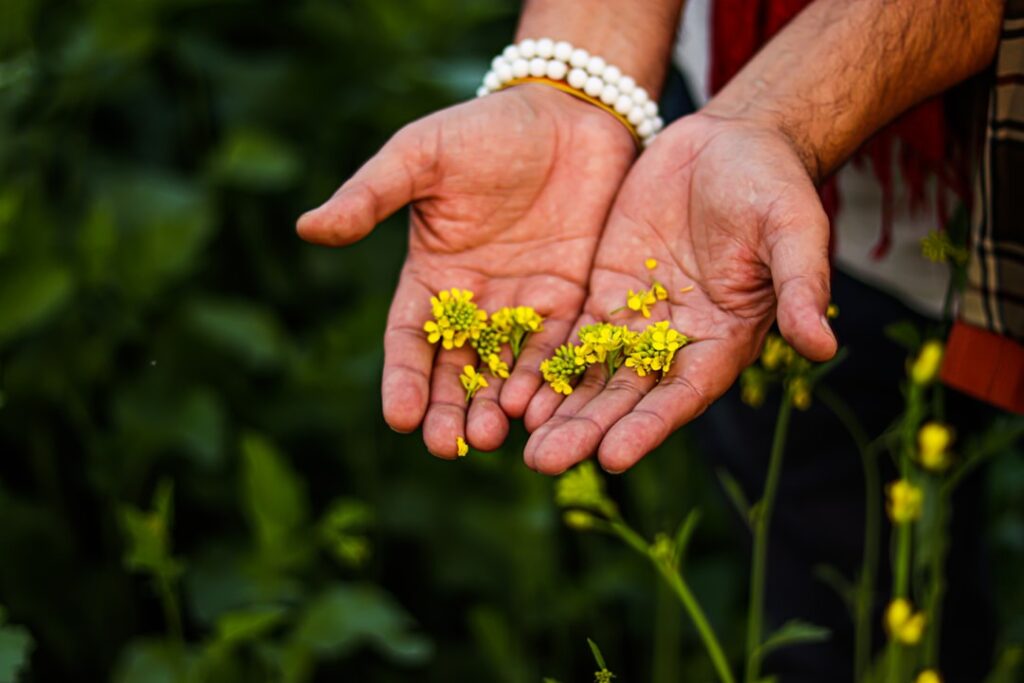Let’s be honest, my relationship with weeding used to be less “zen garden” and more “all-out war.” Every spring, I’d step outside, survey my burgeoning flower beds, and see not the promise of peonies, but an invading army of crabgrass, a creeping insurgency of bindweed, and dandelion paratroopers dotting the landscape. My mission, should I choose to accept it, was to seek and destroy.
My battle strategy was a frantic, scorched-earth campaign. I’d jam in my earbuds, blast a rage-fueled playlist, and attack the soil with the ferocity of a badger who’d had his morning coffee stolen. I’d yank, I’d hack, I’d mutter unspeakable things to thistle roots. It was an hour of sweaty, back-breaking, dirt-under-the-fingernails combat. And the result? A temporarily tidy garden, a sore back, and the grim knowledge that the enemy would be back in a week. I was Sisyphus in gardening clogs.
The change came not from a new, magical herbicide, but from a moment of pure, unadulterated exhaustion. One Saturday morning, staring at a particularly smug-looking patch of clover, I just… gave up. The war was unwinnable. My anger wasn’t killing the weeds any faster, it was just making me miserable.
What if, I thought, I changed the rules of engagement? What if, instead of fighting my garden, I just… spent some time in it?
From Battleground to Breathing Room
That was the start of my accidental experiment in mindful weeding. I decided to approach the task not as a chore to be conquered, but as a practice to be experienced. Here’s how my personal case study in garden-variety enlightenment unfolded.
1. The Un-Gearing Up
First, the headphones had to go. No more podcasts, no more angry ’90s rock. The only soundtrack allowed was the actual world: the chirp of a sparrow, the drone of a distant lawnmower, the gentle rustle of leaves. I also put my phone on silent and left it inside. The goal was to eliminate distractions and create a pocket of intentional quiet. My only tools were my gloves and a trusty hori-hori knife.
2. Setting a Simple Intention
Instead of my usual goal (“ERADICATE ALL UNWANTED VEGETATION BEFORE I COLLAPSE”), I set a new, gentler intention. “I am going to spend the next 20 minutes tending to this small patch of earth.” That’s it. No pressure, no grand objective. The focus shifted from the outcome (a weed-free utopia) to the process itself.
3. Engaging the Senses
This was the real game-changer. As I knelt on the ground, I started to actually notice things.
- Touch: I felt the surprising coolness of the damp soil on my gloved fingertips. I paid attention to the different textures of the weeds—the waxy feel of purslane, the fuzzy stem of a mallow. The best part? That deeply satisfying pop of a long taproot finally letting go. It’s the ASMR of gardening.
- Sight: I looked, really looked, at the weeds. I noticed the intricate, geometric patterns of a dandelion leaf and the delicate white flowers on a chickweed I’d previously only seen as a green menace. I wasn’t just pulling “weeds”; I was interacting with individual, living plants.
- Sound & Smell: The quiet allowed me to hear the subtle scrape of my knife in the dirt and the earthy, rich smell that rose up from the soil. It was grounding, literally.
The Wandering Mind and the Weed
My mind didn’t magically become a serene, empty vessel. Of course not. It did what minds do: it wandered. It replayed an awkward conversation from the day before. It started composing a grocery list. It worried about a work email.
But here’s the trick I learned from meditation: when I noticed my mind had galloped off, I didn’t get frustrated. I just gently acknowledged it—”Ah, hello there, anxiety about my inbox”—and then brought my focus back to the physical sensation at hand. Back to the feeling of the weed’s stem in my fingers, back to the sight of the dark, rich soil. Each weed became an anchor, a tiny, tangible thing to pull my attention back to the present moment.
The weeds still come back, of course. They are relentless, eternal optimists. But my relationship with them has fundamentally changed. Weeding is no longer a battle I dread. It’s a moving meditation, a scheduled appointment with peace and quiet. My garden looks better, yes, but more importantly, I feel better. It turns out the most stubborn thing I needed to root out wasn’t the crabgrass, but my own resistance.
Photo by Swastik Arora on Unsplash

